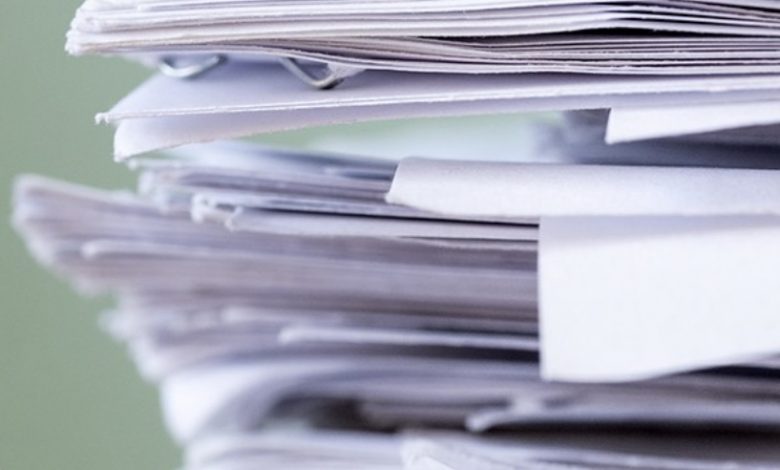Types, thickness and weight

Types, thickness and weight
Main articles: Paper size, Grammage, and Paper density
Card and paper stock for crafts use comes in a wide variety of textures and colors
The thickness of paper is often measured by caliper, which is typically given in thousandths of an inch in the United States and in micrometres (µm) in the rest of the world.[19] Paper may be between 0.07 and 0.18 millimetres (0.0028 and 0.0071 in) thick.[20]
Paper is often characterized by weight. In the United States, the weight is the weight of a ream (bundle of 500 sheets) of varying “basic sizes” before the paper is cut into the size it is sold to end customers. For example, a ream of 20 lb, 8.5 in × 11 in (216 mm × 279 mm) paper weighs 5 pounds because it has been cut from larger sheets into four pieces.[21] In the United States, printing paper is generally 20 lb, 24 lb, 28 lb, or 32 lb at most. Cover stock is generally 68 lb, and 110 lb or more is considered card stock.
In Europe and other regions using the ISO 216 paper-sizing system, the weight is expressed in grams per square metre (g/m2 or usually just g) of the paper. Printing paper is generally between 60 g and 120 g. Anything heavier than 160 g is considered card. The weight of a ream therefore depends on the dimensions of the paper and its thickness.
Most commercial paper sold in North America is cut to standard paper sizes based on customary units and is defined by the length and width of a sheet of paper.
The ISO 216 system used in most other countries is based on the surface area of a sheet of paper, not on a sheet’s width and length. It was first adopted in Germany in 1922 and generally spread as nations adopted the metric system. The largest standard size paper is A0 (A zero), measuring one square metre (approx. 1189 × 841 mm). A1 is half the size of a sheet of A0 (i.e., 594 mm × 841 mm), such that two sheets of A1 placed side by side are equal to one sheet of A0. A2 is half the size of a sheet of A1, and so forth. Common sizes used in the office and the home are A4 and A3 (A3 is the size of two A4 sheets).
The density of paper ranges from 250 kg/m3 (16 lb/cu ft) for tissue paper to 1500 kg/m3 (94 lb/cu ft) for some specialty paper. Printing paper is about 800 kg/m3 (50 lb/cu ft).[22]
Paper may be classified into seven categories:[23]
Printing papers of wide variety.
Wrapping papers for the protection of goods and merchandise. This includes wax and kraft papers.
Writing paper suitable for stationery requirements. This includes ledger, bank, and bond paper.
Blotting papers containing little or no size.
